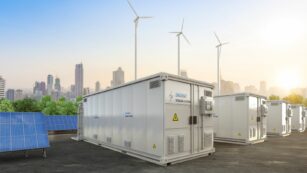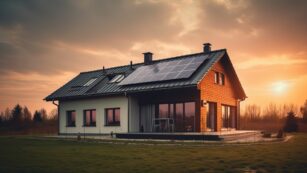As the world grapples with climate change and resource depletion, sustainable building systems have surged to the forefront of architectural innovation. These systems prioritize environmental responsibility, energy efficiency, and resource conservation, transforming the way structures are built and operated. By integrating technologies like solar panels, green roofs, and energy-efficient windows, sustainable buildings not only reduce carbon footprints but also offer long-term economic benefits.
Sustainable Building Systems
Sustainable building systems focus on integrating practices that promote environmental sustainability and resource efficiency. These systems are pivotal in constructing buildings that align with global ecological goals.
Energy Efficiency and Management
 Energy efficiency stands as a cornerstone in sustainable building systems. Techniques such as enhanced insulation, energy-efficient windows, and LED lighting systems drastically reduce the need for excessive energy consumption. Buildings integrate advanced HVAC systems that optimize energy use by automatically adjusting to occupancy and weather conditions. Moreover, smart metering and energy management systems provide real-time data, enabling further optimization of energy usage. For instance, the retrofitting of older buildings with these technologies has shown to decrease energy consumption by up to 50%.
Energy efficiency stands as a cornerstone in sustainable building systems. Techniques such as enhanced insulation, energy-efficient windows, and LED lighting systems drastically reduce the need for excessive energy consumption. Buildings integrate advanced HVAC systems that optimize energy use by automatically adjusting to occupancy and weather conditions. Moreover, smart metering and energy management systems provide real-time data, enabling further optimization of energy usage. For instance, the retrofitting of older buildings with these technologies has shown to decrease energy consumption by up to 50%.
Materials and Resources
The choice of materials significantly impacts the sustainability of a building. Sustainable construction materials like bamboo, recycled steel, and low-VOC paints reduce the environmental footprint of building projects. These materials not only offer durability and practicality but also promote healthier indoor air quality.
Benefits of Implementing Sustainable Building Systems
Sustainable building systems offer significant advantages that extend beyond environmental conservation, impacting economic aspects and enhancing occupant health.
Environmental Impact
 Sustainable buildings dramatically decrease resource consumption, thereby minimizing environmental degradation. These structures often incorporate renewable energy sources, such as solar panels, which significantly reduce greenhouse gas emissions. For example, a building with solar panels can decrease its carbon footprint by up to 80% compared to conventional buildings. Additionally, the use of recycled materials like bamboo and reclaimed steel lowers the demand for raw, often non-renewable resources. Green roofs and increased insulation also play critical roles, enhancing energy efficiency and reducing the overall energy expenditures of a building.
Sustainable buildings dramatically decrease resource consumption, thereby minimizing environmental degradation. These structures often incorporate renewable energy sources, such as solar panels, which significantly reduce greenhouse gas emissions. For example, a building with solar panels can decrease its carbon footprint by up to 80% compared to conventional buildings. Additionally, the use of recycled materials like bamboo and reclaimed steel lowers the demand for raw, often non-renewable resources. Green roofs and increased insulation also play critical roles, enhancing energy efficiency and reducing the overall energy expenditures of a building.
Economic Benefits
Implementing sustainable technologies not only conserves the environment but also offers substantial economic advantages. Initial investments in sustainable systems, such as high-performance insulation or energy-efficient HVAC systems, lead to long-term savings on utility bills. A case study shows that implementing such technologies can result in energy cost reductions of up to 30%. These buildings also tend to have higher market values and attract tenants more quickly, ensuring better capital returns. Furthermore, incentives and tax breaks provided for green building projects can significantly offset the upfront costs.
Health and Comfort Advantages
 Sustainable buildings contribute profoundly to occupant health and comfort. They utilize non-toxic materials and improve indoor air quality by integrating advanced ventilation systems and low-emission products. For instance, materials like zero-VOC paints and natural fibers decrease the prevalence of airborne contaminants. Additionally, features like enhanced natural lighting and optimized acoustic design not only improve mood and productivity but also reduce stress levels, fostering a healthier living and working environment. Energy-efficient windows and better thermal controls also contribute to consistent indoor temperatures, enhancing comfort and reducing dependency on heating and cooling systems.
Sustainable buildings contribute profoundly to occupant health and comfort. They utilize non-toxic materials and improve indoor air quality by integrating advanced ventilation systems and low-emission products. For instance, materials like zero-VOC paints and natural fibers decrease the prevalence of airborne contaminants. Additionally, features like enhanced natural lighting and optimized acoustic design not only improve mood and productivity but also reduce stress levels, fostering a healthier living and working environment. Energy-efficient windows and better thermal controls also contribute to consistent indoor temperatures, enhancing comfort and reducing dependency on heating and cooling systems.
Current Trends in Sustainable Building Systems
 Sustainable building systems are reshaping the future of construction and architecture by integrating eco-friendly practices that benefit both the planet and the people. These innovative approaches are setting new standards for how buildings are designed, constructed, and operated. As society pushes towards a more sustainable future, these building practices are not just trends but necessities that ensure a harmonious balance with the environment.
Sustainable building systems are reshaping the future of construction and architecture by integrating eco-friendly practices that benefit both the planet and the people. These innovative approaches are setting new standards for how buildings are designed, constructed, and operated. As society pushes towards a more sustainable future, these building practices are not just trends but necessities that ensure a harmonious balance with the environment.
The adoption of sustainable building technologies offers significant economic returns and health benefits, proving that what’s good for the earth is also good for its inhabitants. With each step forward in sustainable construction, the industry moves closer to a model that supports enduring environmental health and resource efficiency.
Embracing these sustainable practices today will pave the way for more resilient and sustainable living spaces tomorrow. As the world continues to evolve, so too will the ways in which we construct our environments ensuring they are beneficial for generations to come.

